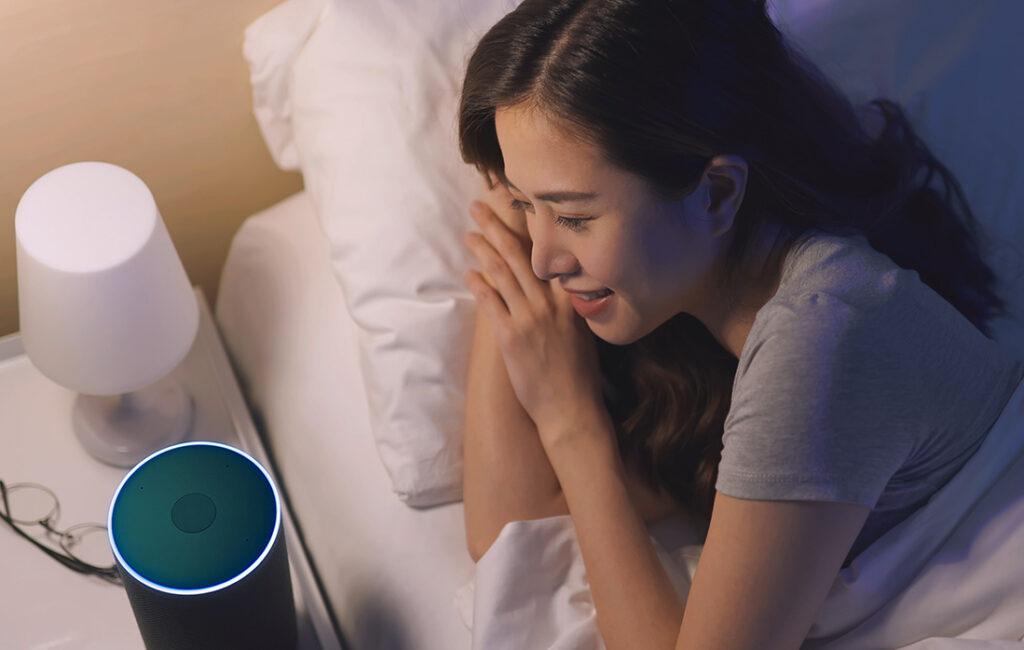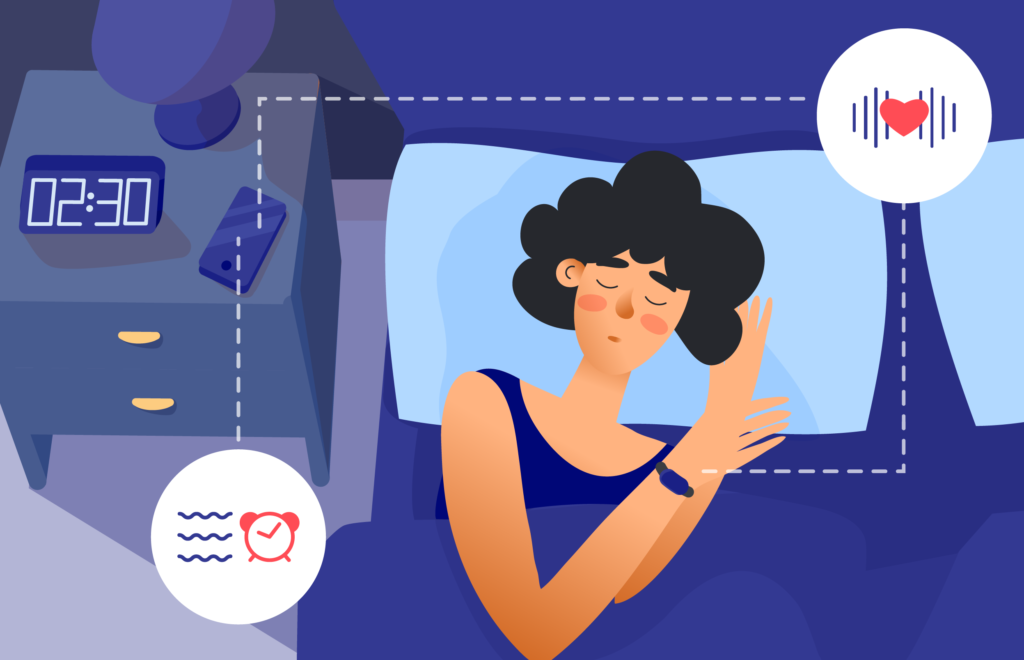It’s been the focus of panicky and confused social media posts, mixed with hopeful and optimistic opportunities. Artificial intelligence (AI) has taken the world by storm, especially with the rise of ChatGPT and similar tools in recent months. The medical community is no exception, with researchers looking towards a future where AI and machine learning are not only a typical every day part of care, but solving problems they never could have before.

New research has emerged showing that patients with Obstructive Sleep Apnea (OSA), one of the most dangerous and pervasive sleep disorders in the U.S., wildly underdiagnosed, are at the forefront of this new technology. From screening and diagnosis through treatment, there are opportunities for providers and patients to collaborate and achieve better results with AI, potentially. One 2022 study defines AI’s role in this capacity: “AI refers to the capability of computer systems to perform tasks conventionally considered to require human intelligence, such as speech recognition, decision-making, and visual recognition of patterns and objects.”
What Researchers Already Know About AI
In a March 2024 study published in the Journal of Clinical Sleep Medicine, researchers reviewed 132 studies that concluded machine learning models are successful at diagnosing OSA, including by obtaining features from the electrocardiogram, pulse oximetry, and sound signals. In addition, ML performed well in categorizing OSA, and classifying the patient’s severity. It also showed that ML predicted outcomes of surgical treatment and CPAP therapy accurately.
Another January 2024 study showed that AI significantly improved identification of high-risk OSA patients, analyzing age, gender, and BMI. Researchers concluded that AI could help screen a larger number of OSA patients in daily practice through simple and quick measures and testable parameters, “vastly improving” efficiency. AI is also able to take into account demographic data, and even treat people in developing countries with scarce resources more quickly.
AI’s Role in Initial Testing
Once a doctor or patient suspects OSA symptoms might be at play, AI-based diagnostic processes might be a part of their next steps. Dr. Jerry Hu, triple board certified dental sleep medicine doctor and researcher, and adjunct professor at Medical University of South Carolina, who practices in both Alaska and Nevada, explains those first steps.
“Currently, sleep doctors offer 2 basic types of sleep testing to interpret for sleep apnea diagnosis. One is at a sleep center, called a polysomnogram or polysomnography (PSG), and the other, is called home sleep testing (HST),” he says. “Both testing types can be substantially improved with artificial intelligence learning, tracking, monitoring, as well as creating new metrics and data, using AI.”
When the overnight PSG needs to be analyzed by technicians who score the raw data on a patient-by-patient basis, there can be efficiency and time frame issues, he says, “especially on patients who have severe airway issues and need treatment urgently.” Then, data has to be summarized and transferred to the doctor for diagnosis and treatment. “AI can make all the difference in terms of increasing speed and accuracy, summarizing, identifying patterns, utilizing global data to compare and develop new clinical trials, classifying levels and degrees of sleep parameters, and creating new predictive analytics that never existed in PSG.”

AI is also helping with HSTs. “AI can approve data collection and processing and perhaps even decrease the number of ‘human errors’ as patients are on their own at home hooking up and activating the home sleep tests,” he says. “AI can give live feedback and detect when and if the technical and physical components of a HST are placed properly and securely.”
The Future of Treatment
AI’s potential in the future of OSA treatment can be divided into two main areas: improving and evaluating treatment, and personalizing treatment, according to a February 2024 study, allowing patients to connect with treatment methods that would help their particular case the best, researchers reported. For example, Kevin Postol, DDS, President-Elect for the American Academy of Dental Sleep Medicine (AADSM) in Ballwin, Mo., says AI will likely in the future be used for providers to analyze patient phenotypes to determine what treatment will be best for each patient, and most beneficial or successful. “AI will likely in the future be used for providers to analyze patient phenotypes, observable traits such as age, gender, or race-ethnicity, to determine what treatment will be best for each patient, and most beneficial or successful,” Postol says.
“It is foreseeable that AI may help qualified dentists better determine if patients are suitable candidates for oral appliance therapy (OAT). It may also help identify the likelihood for potential side effects and offer remote monitoring options for some patients,” he says. “Finally, it will likely eventually be used to maximize efficiencies and decrease unnecessary workflows for health care providers.”
However, he cautions that like any other shiny new tool, it has to be one of many other tools in the toolbox, not used in isolation. In addition, it’s unlikely to take over the role of an educated and involved medical professional in the diagnosis and treatment process. “Providing optimal patient care requires humanistic and empathetic care, which is not possible through AI,” he says.
Like in other industries, however, the full potential and capabilities of AI aren’t yet completely understood. He says, “AI will completely change how medicine and dentistry are practiced. Most practitioners, including dentists, do not completely understand how AI will have an impact on our diagnosis and treatment for our patients, but it will be important for us to learn how these technologies can help us provide optimal patient care.”
Sources
Manning, Dr. Christopher. “Artificial Intelligence Definitions.” AI Definitions, Stanford University, Sept. 2020, https://hai.stanford.edu/sites/default/files/2020-09/AI-Definitions-HAI.pdf.
George Bazoukis, MD, Sandeep Chandra Bollepalli, PhD, Cheuk To Chung, PhD, Xinmu Li, PhD, Gary Tse, PhD, Bethany L. Bartley, MD, Salma Batool-Anwar, MD, MPH, Stuart F. Quan, MD, Antonis A. Armoundas, PhD. Application of Artificial Intelligence in the Diagnosis of Sleep Apnea, 1 Mar. 2024, https://jcsm.aasm.org/doi/10.5664/jcsm.10532.
Brennan, H.L., Kirby, S.D. The role of artificial intelligence in the treatment of obstructive sleep apnea. J of Otolaryngol – Head & Neck Surg 52, 7 (2023). https://doi.org/10.1186/s40463-023-00621-0
Bandyopadhyay, A., Goldstein, C. Clinical applications of artificial intelligence in sleep medicine: a sleep clinician’s perspective. Sleep Breath 27, 39–55 (2023). https://doi.org/10.1007/s11325-022-02592-4


























